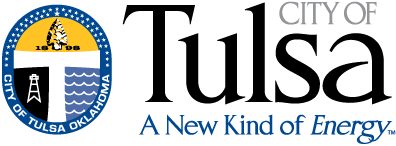
Chloramine conversion
Improvements were constructed at both the Mohawk and A.B. Jewell water treatment plants preparing for the conversion from free chlorine to chloramines (Cl2 + ammonia) as the secondary disinfectant in the treatment process. The actual conversion and start-up was July 31, 2012. Initial tests following start-up indicate substantial improvement complying with regulatory requirements.
Water Operations
-
Installed new propane delivery system at the Grand River Pump Station. The new system, considered innovative by ODEQ and more efficient, was installed at an estimated cost savings of $100,000 compared to replacing the system with like-kind. The projected annual savings is $10,000.
-
Continuing to work with OWRB on the floating wetlands project at the upper-end of Lake Eucha for removal of taste and odor precursors.
-
Updated Dam Breach Plans for Lake Eucha, Lake Spavinaw, Yahola Reservoir, and Lynn Lane Reservoir.
-
Joined AEP/Public Service Company’s Demand Response Program, an incentive based program for select high electric energy users to reduce energy demands during peak periods in the summer months. Select process units at Mohawk and A.B. Jewell WTP’s are included in the program.
-
Completed the asset data collection and risk assessment phases of the Strategic Asset Management (SAMS) program for the Mohawk and A.B. Jewell WTP’s.
-
Repaired 1,159 water main breaks and 655 leaks. The average time a customer was without water service was 4.92 hours per repair.
-
Commenced installing new SCADA system that will allow remote monitoring and control of distribution pump station and storage tank operations. Project will be completed in FY2013.
-
Investigated and surveyed 257 miles of water lines for surfacing and non-surfacing leaks.
-
Changed out 14,189 small, medium and large meters.
-
Read 1,748,258 meters with an accuracy rate of 99.9 percent.
-
Implemented an automated dispatch system to improve customer service and continued progress toward a paperless system.
-
Developed and implemented Nitrification Control and Response Plan as part of the chloramines conversion project.
Wastewater Operations
-
Completed approximately 30 percent of the asset data collection and risk assessment phases of the Strategic Asset Management (SAMS) program for the sanitary sewer lift stations and selected force mains.
-
The Sewer Operation and Maintenance (SOM) section repaired, rehabilitated, or replaced 1.242 miles of sewer mains and cleaned 946 miles.
-
Joined AEP/Public Service Company’s Demand Response Program, an incentive based program for select high electric energy users to reduce energy demands during peak periods in the summer months. Three major lift stations are included in the program.
-
Transitioned the sanitary sewer inflow/infiltration program, the “Smokie” program, from Working-In-Neighborhoods Department to the new Water and Sewer Department.
Capital projects
-
Replaced 133,485-feet, or 25.281 miles, of water lines, or 1.10 percent.
-
Installed 14,503-feet, or 2.747 miles, of new water lines.
-
Replaced and rehabilitated 37,596-feet, or 7.121 miles, of sanitary sewer lines, or 0.36 percent.
-
Installed 12,143-feet, or 2.300 miles, of new sewer lines.
-
Haikey Creek WWTP solids thickening improvements completed. The new equipment reduces the volume of sludge hauled by 40 percent which results in lower transportation costs and allows treatment plant personnel to focus more time on operational and maintenance activities instead of driving.
-
Northside and Southside WWTP disinfection improvements completed. The new disinfection process utilizes liquid chemicals, in lieu of gaseous chemicals, providing a safer working environment for employees and reduces the risk of chemical exposure to the community.
-
Southside WWTP diffused aeration improvements nearly complete. The new equipment more effectively delivers air to the treatment process resulting in greater treatment quality and reduced utility costs.
-
Lower Bird Creek WWTP expansion construction commenced (June 2012). Capacity will be expanded from 2 million gallons per day to 4 million gallons per day anticipating growth in the Spunky Creek drainage basin of east Tulsa.
Many other performance measures and operational data for FY2012 are included in the Statistical Section of this report.
